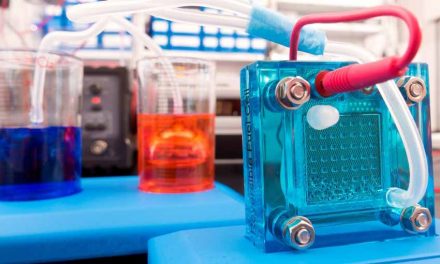One thing I learned as a former financial journalist is that the biggest, most important stories are often the kind no one pays attention to at first.
That “attention gap” is what allows obscure companies and technologies to seemingly come from nowhere, overturn conventional thinking and make fortunes for founders and investors.
That’s happening right now with fuel cell technology.
But it’s happening in China, not the U.S. — which is why this massive disruptive trend is able to escape most investors’ attention.
China’s Grand Experiment
Late last year, the city of Shenzhen (population 12 million) rolled out a battery-powered fleet of 16,000 electric buses. They’re replacing the diesel models that were the mainstay of city transportation since the days of Chairman Mao.
Within the next few years, nearly a dozen of China’s largest cities plan to follow suit.
Some predict the transition could be an existential threat to oil by removing nearly 300,000 barrels’ worth of diesel consumption each day from Chinese demand.
But the country’s grand experiment with electric vehicles (EVs) shows the limitations of battery-powered heavy vehicles.
For instance, Hong Kong won’t electrify its bus system. Experiments showed the city’s steep hills sap the strength of bus batteries too quickly.
And in China’s northern realm, the extreme cold proved too much as well.
But as I’ve noted before, China has a plan to address those drawbacks — with fuel cells.
Better Than Batteries
A quick primer: Fuel cells convert hydrogen and oxygen into electricity. But unlike a battery, they can be recharged in a few minutes’ time.
The weight is less, too. A battery on a Chinese-made BYD K9 bus weighs more than 3,000 pounds all by itself. An equivalent fuel cell system weighs roughly 200 pounds.
There are only a few thousand fuel cell vehicles on China’s roads right now. But as the Financial Times noted a few months ago, China’s committed to having 1 million fuel cell vehicles on the road by 2030.
Fuel cell tech now has powerful backing too.
The country’s former science and technology minister, Wan Gang, was hailed as the country’s “father of electric vehicles.” He promoted EVs as a priority for the country’s economy — and recently called for China to go all-in on fuel cells.
As he wrote in the state-run People’s Daily late last year (and reported by Bloomberg), battery-powered EVs have a short driving range and long charging time. That means they can’t meet the needs of long-distance buses, taxis, urban logistics or long-haul transport.
The Coming Payoff in Fuel Cells
Thing is, fuel cells are already starting to creep into the global transportation system.
Amazon and Walmart both run hundreds of forklifts powered by fuel cells in their warehouses.
San Francisco and Scotland are using fuel cells for passenger ferries set to go into operation in 2020.
Germany has two electric passenger trains powered by onboard fuel cells.
And then there’s Toyota, the world’s largest auto company.
The company that built the best-selling hybrid Prius is no fan of battery-only transportation. It’s ramping up production to produce 20,000 fuel cell EVs by next year.
Kind regards,

Jeff L. Yastine
Editor, Total Wealth Insider



